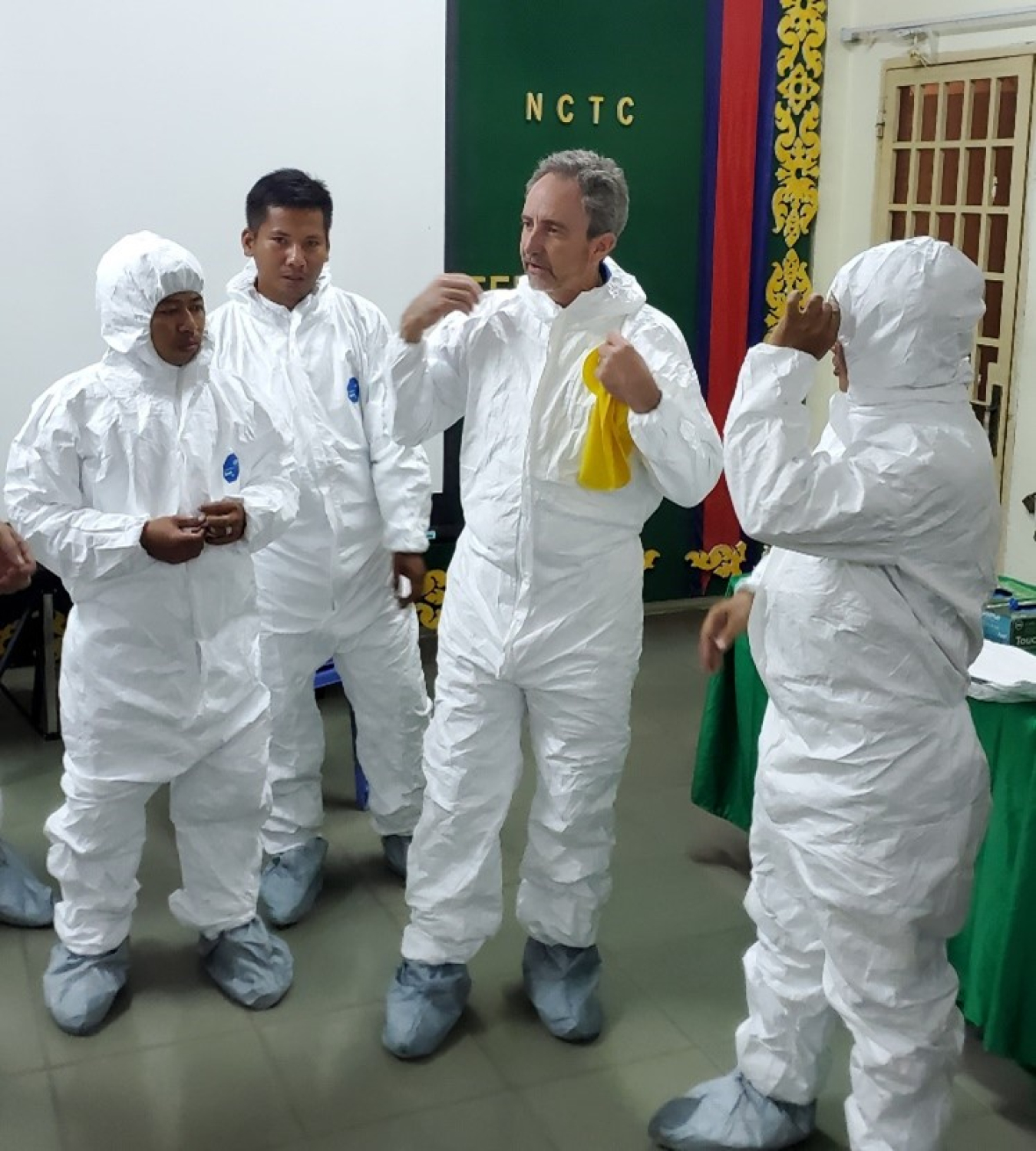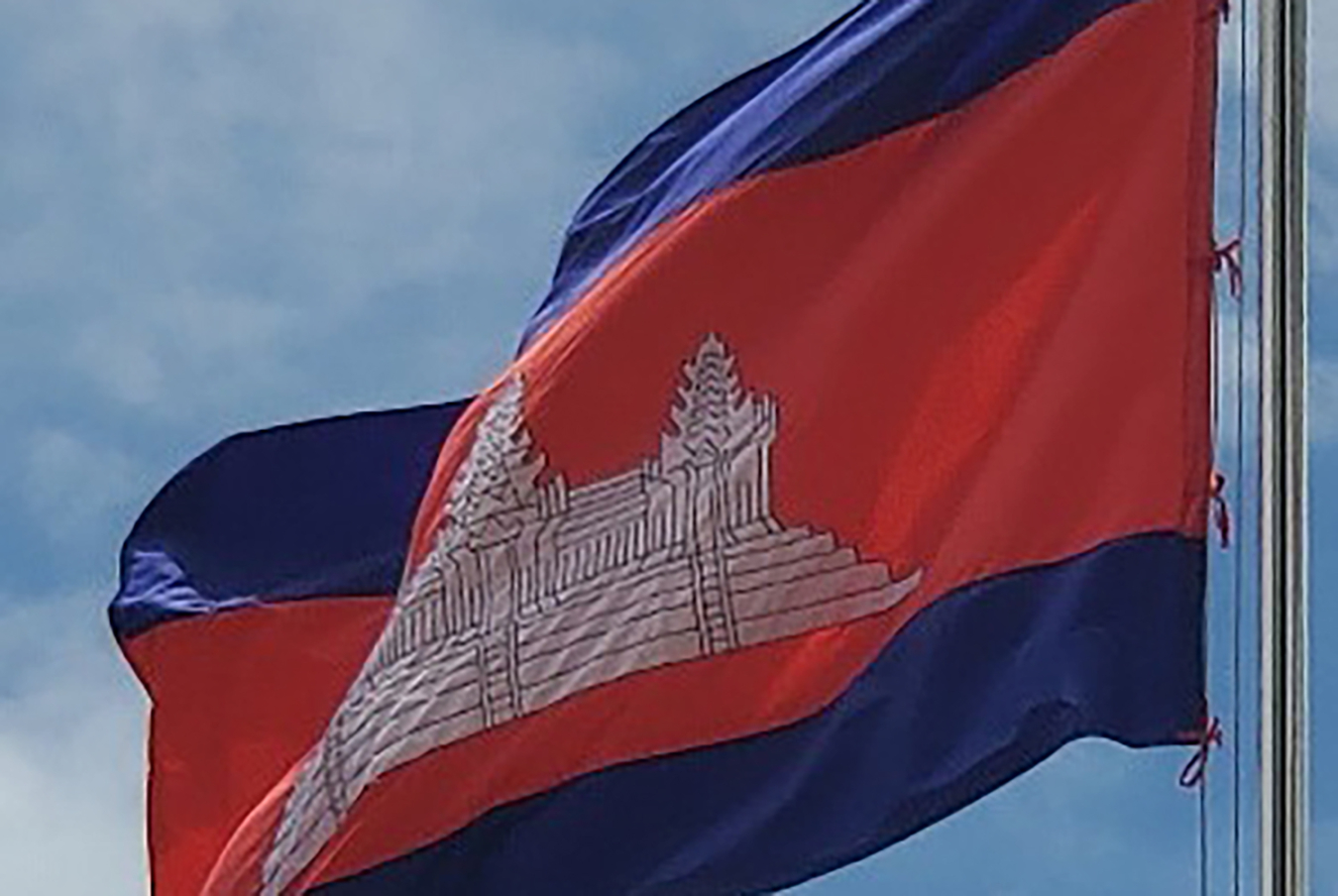NNSA and Cambodia recently collaborated to deliver radiological emergency preparedness and response training to Cambodian emergency response training to Cambodian emergency responders in Phnom Penh last month.
National Nuclear Security Administration
November 6, 2023
NNSA’s Office of Counterterrorism and Counterproliferation (CTCP) and Cambodia’s Secretariat of National Counter-Terrorism Committee (SNCTC) recently collaborated to deliver radiological emergency preparedness and response training to Cambodian emergency responders in Phnom Penh last month. The training continued to build on a partnership that started more than 10 years ago.
“Our mission is enduring, even as personnel and equipment change,” said Andrae Brooks, NNSA Senior Foreign Affairs Officer with CTCP’s Office of Nuclear Incident Policy and Cooperation (NIPC). “We retrain and we introduce our international partners to new devices and techniques, but we also maintain equipment we’ve loaned to them in the past for this mission. Change is inevitable, but these are our partners, and we have pledged to prepare them and stand by them.”
More than 20 participants took part in the International Radiological and Nuclear Training for Emergency Response (I-RAD) course, which included urban search techniques, radiological emergency response planning, radiation search techniques, radiological source recovery, and a practical field exercise.

Participants included members of SNCTC, the Cambodian Special Forces, and the Cambodian Department of Intelligence and Investigation.
NNSA began training partners in Cambodia in 2012 and provided Spectral Advanced Radiation Computing Systems – or SPARCS – to the SNCTC in 2013. SPARCS is a versatile gamma radiation detection system for use in vehicles, boats, and aircraft that will enable partners to facilitate radiological training and operations for soldiers and civilians.
“The ‘loan’ part is important and key to the relationship,” Brooks said. “We know that sustainability is important, and we’re prepared to come back to troubleshoot, maintain and fix, or refresh equipment that’s been provided – even 10 years later. This is one of the ways we do right by our international partners. It shows them that we’re committed to the relationship and in it for the long haul.”

During the training, the Vice President of the SNCTC, His Excellency Eang Ung, expressed gratitude for NIPC’s continued support and explained that his emergency preparedness and response strategy includes expanding radiological mobile detection.
Most recently, his office used NNSA-loaned SPARCS units to support the 12th Association of Southeast Asian Nations Para Games.
National security and response to chemical, biological, radiological, or nuclear (CBRN) incidents in Cambodia is a high priority. For the SNCTC, this includes establishing training centers on radiological response and the development of future Cambodian CBRN teams.
NNSA plans to support these Cambodian national-level efforts, as demonstrated and beginning with this I-RAD course. Additionally, NIPC is working with SNCTC to identify “Train-The-Trainer” civilian and law enforcement personnel to work side-by-side in the future with their American counterparts as facilitators in Advanced I-RAD courses. The desired “whole of government” approach will build internal capacity and radiological capability for Cambodia.


